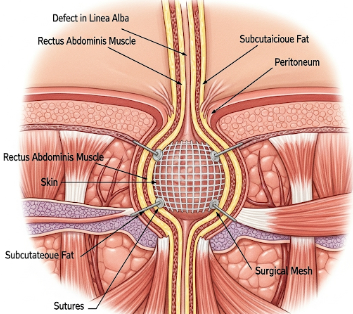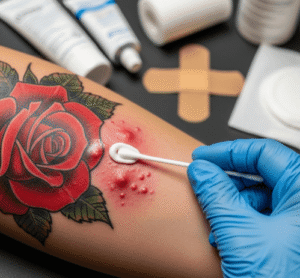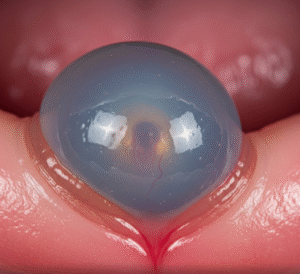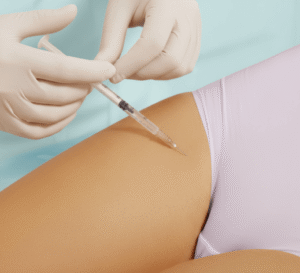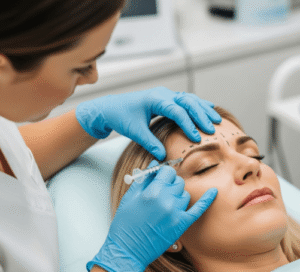What it is
An umbilical hernia occurs when part of the intestine or fatty tissue protrudes through a weak spot near the navel (umbilicus). This type of hernia is common in infants, young children, and adults, especially in individuals who are overweight, pregnant, or have increased abdominal pressure.
Umbilical hernia repair is a surgical procedure aimed at closing the hernia defect and reinforcing the abdominal wall to prevent recurrence. The procedure can be performed as an open surgery or minimally invasive laparoscopic surgery, depending on the hernia size, patient health, and surgeon preference.
Key points:
- Corrects protrusions near the navel.
- Prevents complications such as incarceration or strangulation.
- Suitable for both children and adults, with techniques adapted to age and hernia size.
Why it’s done
Umbilical hernia repair is indicated for several reasons:
- Symptomatic hernias: Pain, swelling, or discomfort around the navel.
- Risk of complications: Large or persistent hernias can become incarcerated or strangulated, leading to emergency situations.
- Cosmetic reasons: Some patients opt for repair to restore normal abdominal appearance.
- Preventive repair: In adults, umbilical hernias rarely resolve on their own, so surgery is often recommended to avoid future complications.
- Improving quality of life: Reduces discomfort during physical activity, lifting, or prolonged standing.
Note: In infants, small umbilical hernias often close naturally by age 3–4, but larger or persistent hernias may require surgical intervention.
Alternatives
While surgical repair is the definitive treatment, alternatives include:
- Watchful waiting: Often recommended for infants and small, asymptomatic hernias.
- Supportive belts or trusses: Temporary relief for adults but do not correct the hernia.
- Lifestyle adjustments: Weight management, avoiding heavy lifting, and controlling abdominal pressure may reduce symptoms but cannot repair the hernia.
Important: Non-surgical options are temporary and not suitable for hernias at risk of complications.
Preparation
Preparation ensures safe surgery and optimal outcomes:
Preoperative steps:
- Medical evaluation: Blood tests, imaging (ultrasound or CT scan) to assess hernia size and content.
- Medication review: Inform the surgeon about anticoagulants, aspirin, or other medications.
- Fasting: Typically 6–8 hours before surgery if general anesthesia is planned.
- Lifestyle considerations: Stop smoking, maintain hydration, and follow any preoperative instructions.
Patient instructions:
- Arrange transportation after surgery.
- Wear comfortable, loose clothing on the day of surgery.
- Discuss any allergies, chronic conditions, or previous surgeries with the surgeon.
How it’s done
Umbilical hernia repair can be performed using open or laparoscopic techniques:
1. Open Umbilical Hernia Repair:
- A small incision is made at or near the navel.
- Herniated tissue is gently returned to the abdominal cavity.
- The defect is closed using sutures or mesh, depending on size and patient age.
- Skin is closed and dressed appropriately.
2. Laparoscopic Umbilical Hernia Repair:
- Several small incisions are made in the abdominal wall.
- A laparoscope and surgical instruments are used to reduce the hernia and place mesh.
- Advantages include smaller scars, faster recovery, and reduced postoperative pain.
Surgical considerations:
- Mesh is often recommended in adults for lower recurrence rates.
- Tissue-only repair may be sufficient for small hernias in children.
Recovery
Recovery depends on age, technique, and hernia size:
Immediate post-surgery:
- Mild pain or discomfort around the navel is common; painkillers are prescribed.
- Walking is encouraged soon after surgery to prevent blood clots.
- Hospital stay ranges from same-day discharge (laparoscopic) to 1–2 days (open repair).
First 2–4 weeks:
- Avoid heavy lifting, bending, or strenuous activity.
- Minor swelling, bruising, or redness may occur but usually improves over time.
- Follow-up visits ensure proper wound healing and early detection of complications.
Long-term recovery:
- Most adults resume normal activities within 2–6 weeks.
- Recurrence risk is low, especially with mesh repair.
- Children often recover quickly and return to normal activity within days.
Complications
While generally safe, potential risks include:
- Infection: At incision or surgical site.
- Bleeding or hematoma: Accumulation of blood under the skin.
- Seroma: Fluid collection at the surgical site.
- Recurrence: Higher risk if mesh is not used in adults.
- Chronic pain or numbness: Rare but possible in adults.
- Anesthesia-related risks: Including nausea, allergic reactions, or cardiovascular events (rare).
Prevention of complications:
- Follow surgeon’s instructions carefully.
- Choose a qualified surgeon experienced in hernia repair.
- Monitor for unusual symptoms such as persistent pain, swelling, or fever.
Treatment Options in Korea
Umbilical hernia repair is a common and well-managed procedure in Korea:
Features of treatment in Korea:
- Available in general hospitals, surgical centers, and specialized hernia clinics.
- Both open and laparoscopic techniques are offered.
- Focus on minimally invasive approaches for faster recovery, less pain, and smaller scars.
- Preoperative evaluation includes laboratory tests, imaging, and medical consultation.
- Postoperative care involves pain management, wound care, and follow-up monitoring.
Korean hospitals follow international standards, ensuring high success rates and patient safety. Patients benefit from experienced surgeons, modern surgical facilities, and structured postoperative care.
Summary: Umbilical hernia repair in Korea is a safe, effective, and timely procedure that restores abdominal wall integrity, prevents serious complications, and allows patients to resume normal activities. Proper preoperative preparation, surgical technique, and postoperative care ensure successful recovery and minimal recurrence risk.

